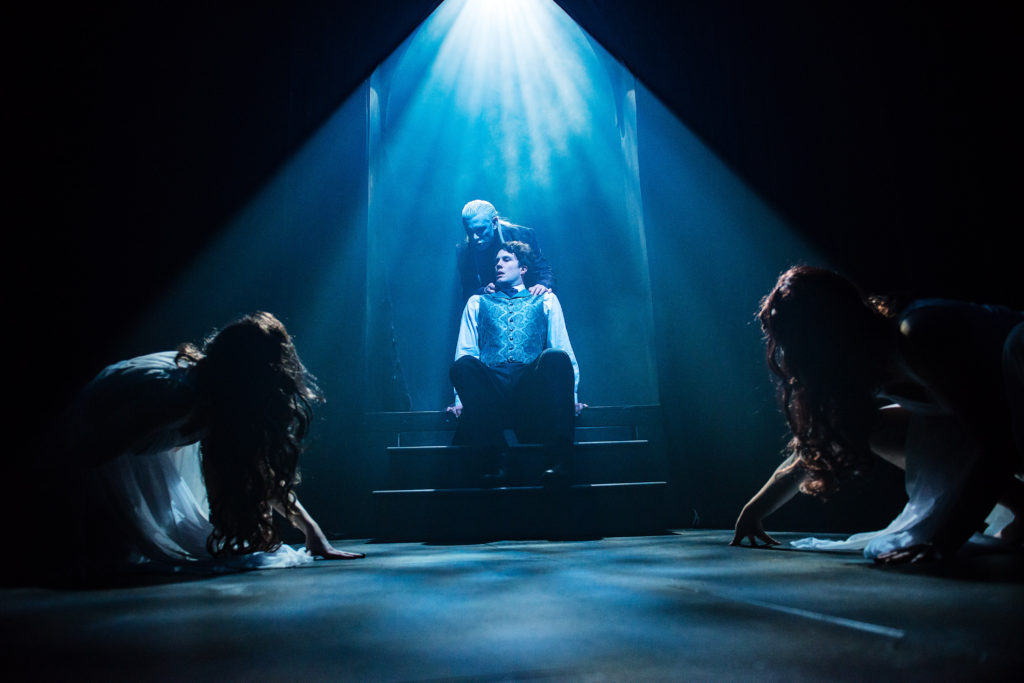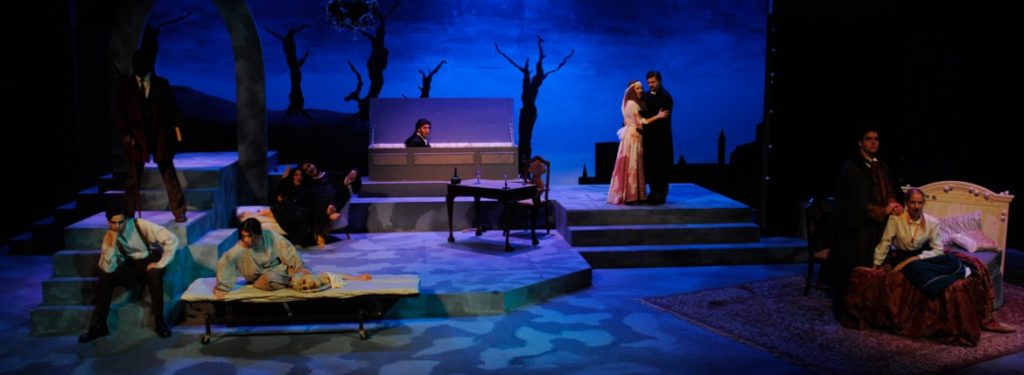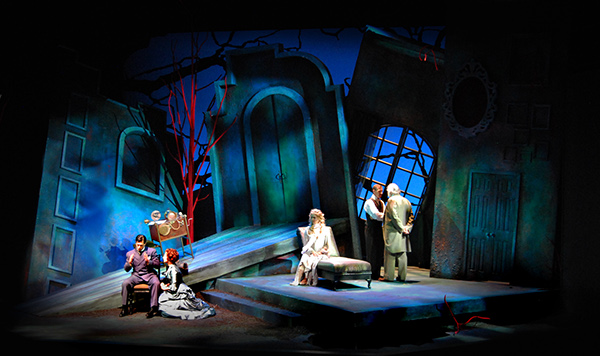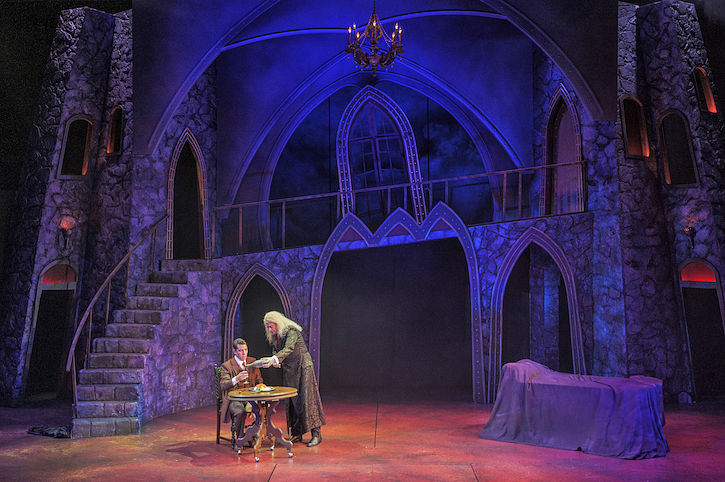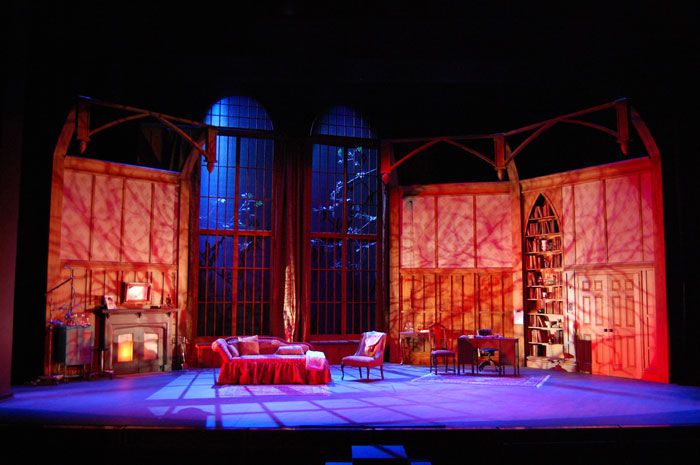Trucks
A rectangular or square base on wheels that can be moved (“trucked”) on and off stage. Depending on the size it can carry a small scene (actors, props, scenery)

Above is an idea of what could go on a truck for a ‘naturalistic’ scene/play.
The idea would be to design and make a small part of a room to suggest the space. YOU DON’T HAVE TO HAVE THE WHOLE ROOM DEPICTED. LET THE AUDIENCE USE THEIR IMAGINATIONS.
This COULD be Renfield’s cell or Dr Seward’s Office. Or a part of Dracula’s castle.
The REALISTIC details are called SET DRESSING. One or two carefully chosen details can make it FEEL like you are seeing a much more elaborate set.
SET DRESSING can be wall coverings (wall paper, paint), wall hangings (pictures, selves books), objects (desks, bed, seats, hat stand)
GAUZES
Gauze is an inexpensive way of achieving ‘special effects’. It does need a basic knowledge of lighting (placement of lights) and other terms like “up stage/ down stage of the gauze, appearance, disappearance, reveal.”
Watch the clip below for an explanation.
Can you think of where it could have application in ‘Dracula’?
REVOLVE (Revolving Stage)
A circular stage (different diameters available) Small could be 4-5 meters across – large might be the whole stage. *Avoid making it too large as these are SUPER EXPENSIVE.
Your solutions should be within the budget of 100s not 1000s of pounds.

“The revolve was created to address one of the fundamental tensions in theatre: the effect on the audience’s patience and suspension of disbelief of long gaps between scenes while stagehands wrestle furniture and props into place in the dark.” [The Guardian newspaper]
The revolve can be centre stage or off centre.
It can have 2 different sides to it of 1 that is turned away when that scene is not the focus.
WHERE IN DRACULA could a revolve help with the scene changes?
